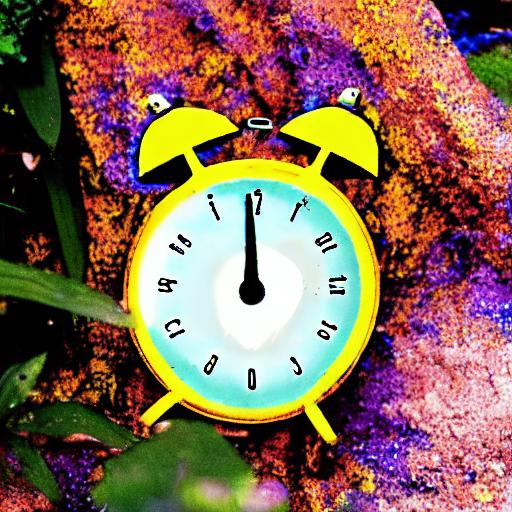Unofficial Implementation of Prompt+, with bit of my own additions to further explore the P+ space of the stable diffusion.
We typically use single text conditioning as an input. Naturally, we reuse the same conditioning for all CrossAttention layer. What if we don't? Prompt+ explores this idea, that we can use different text embedding for different cross attention layers, and it works! Prompt+ textual inversion allows you to "extend" the textual inversion process "per-layer", so although we get 16 total tokens, we can expect better results than the original textual inversion.
Ok, but the code was not released yet, so I decided to implement it myself. I also added some of my own ideas to further explore the P+ space of the stable diffusion.
One possible suboptimality XTI brings is that the idea of having multiple uncorrelated tokens are implicitly assumed. Indeed, unless some second-order optimzier kicks in, all the extended tokens (in a sense) don't know each other at all. This is certainly weird : we have multiple tokens, that are supposed to be correlated (infact, they have to be idential in the original space), but the optimization doesn't account that.
So here I introduce P++ (I just couldn't resist the name), where extended textual inversion occurs with common correlated text embedding. Token
Borrowing some ideas from Encoder4Edit, we make this process "gradually", where
Initial experiments :
Naive ETI, 1500 steps
Correlated ETI, 800 steps
I literally did 1 experiment, so I don't know if this is a good idea or not. But I think it is worth further exploration. Use this repo if you want to try it out.
As of now, this repo requires lora-diffusion as a dependency. You can install it by
pip install git+https://github.com/cloneofsimo/lora.git(I will remove this dependency in the future, maybe...)
Install this repo by
pip install git+https://github.com/cloneofsimo/promptplusplusUse ppp_train command to train: following example
export MODEL_NAME="runwayml/stable-diffusion-v1-5"
export INSTANCE_DIR="./dataset/data_yc"
export OUTPUT_DIR="./exps/yc"
ppp_train --pretrained_model_name_or_path=$MODEL_NAME \
--instance_data_dir=$INSTANCE_DIR \
--output_dir=$OUTPUT_DIR \
--placeholder_tokens="<yc>" \
--use_template="object" \
--do_coarse_inversion=False \
--preserve_prefix=False \Inference is bit tricky. You need to set attentionprocessor that I made, and overwrite the pipeline of StableDiffusionPipeline with custom call function. Luckily, I do that all for you. If you would like to know what is going on, please check out the source code.
from ppp import PPPPromptManager
from ppp import overwrite_call
from ppp import PPPAttenProc
from lora_diffusion import patch_pipe
from diffusers import StableDiffusionPipeline, EulerAncestralDiscreteScheduler
import torch
model_id = "runwayml/stable-diffusion-v1-5"
pipe = StableDiffusionPipeline.from_pretrained(model_id, torch_dtype=torch.float16).to(
"cuda"
)
pm = PPPPromptManager(tokenizer= pipe.tokenizer, \
text_encoder=pipe.text_encoder, \
main_token="<yc>", preserve_prefix=False, extend_amount=1)
pipe.unet.set_attn_processor(PPPAttenProc())
patch_pipe(pipe, "./exps/yc/step_inv_1000.safetensors")
with torch.no_grad():
ps = pm.embed_prompt("a colorful photo of a <yc> in the jungles")
torch.manual_seed(0)
overwrite_call(pipe, prompt_embeds=ps).images[0].save("test.png")@article{voynov2023p+,
title={$ P+ $: Extended Textual Conditioning in Text-to-Image Generation},
author={Voynov, Andrey and Chu, Qinghao and Cohen-Or, Daniel and Aberman, Kfir},
journal={arXiv preprint arXiv:2303.09522},
year={2023}
}@article{roich2022pivotal,
title={Pivotal tuning for latent-based editing of real images},
author={Roich, Daniel and Mokady, Ron and Bermano, Amit H and Cohen-Or, Daniel},
journal={ACM Transactions on Graphics (TOG)},
volume={42},
number={1},
pages={1--13},
year={2022},
publisher={ACM New York, NY}
}@article{tov2021designing,
title={Designing an encoder for stylegan image manipulation},
author={Tov, Omer and Alaluf, Yuval and Nitzan, Yotam and Patashnik, Or and Cohen-Or, Daniel},
journal={ACM Transactions on Graphics (TOG)},
volume={40},
number={4},
pages={1--14},
year={2021},
publisher={ACM New York, NY, USA}
}

